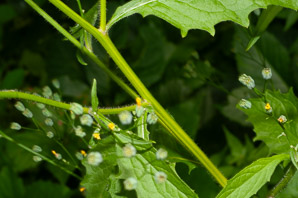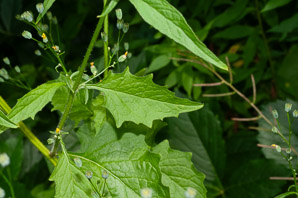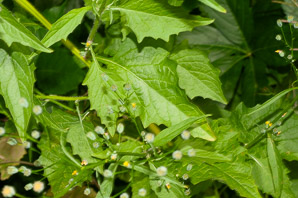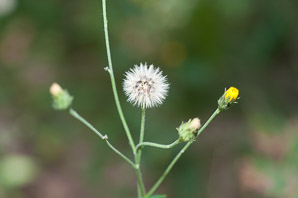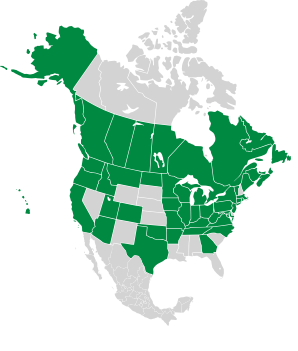
|
Lapsana communis L. Nipplewort
Nipplewort is native to Europe, from Britain and Scandinavia to North Africa and western and central Asia. Identification: Plants are 6-60″ (15-152 cm) in height, either hairy or hairless. A stiff major stem is often reddish and somewhat ridged. Leaves are oval or round, ⅜-6″ (1-15 cm) × ⅜-2½″ (1-7 cm). Each leaf has a large roughly triangular (deltate) lobe at the end, often with two smaller side lobes at the base that vaguely resemble nipples, hence the common name. Lower leaves also have a long petiole that is slightly winged and hairy. They flower from April to September. Flowers occur in panicles of 5-25, rarely as high as 100, each flower ¼-½″ (6.3-12 mm) across, with 18-20 pale yellow rays. Though similar in appearance to hawkweed flowers, they are somewhat paler and, instead of dense dandelion-like centers, the centers look significantly different. Nipplewort looks superficially similar to hawkweeds. See this hawkweed comparison table for details. Medical: The milky latex exuded from cut stems and leaves is said to be soothing to the skin, specifically to nipples of nursing mothers. Online References:
Forest and Kim Starr’s Starr Environmental site The University of Wisconsin's Robert W. Freckmann Herbarium Plants for a Future, a resource and information centre for edible and otherwise useful plants References:
Clemants, Steven; Gracie, Carol, Wildflowers in the Field and Forest, Oxford University Press, 2006, p. 162 7/7/2012 · Gibbet Hill, Groton, Massachusetts · ≈ 8 × 5″ (19 × 13 cm)
Lapsana communis description by Thomas H. Kent, last updated 25 May 2020. © FloraFinder.org. All rights reserved. |
7/7/2012 · Gibbet Hill, Groton, Massachusetts · ≈ 9 × 6″ (23 × 15 cm) 7/7/2012 · Gibbet Hill, Groton, Massachusetts · ≈ 11 × 7″ (27 × 18 cm) 9/20/2009 · Acadia National Park, Bar Harbor, Maine · ≈ 6 × 4″ (15 × 10 cm) 7/7/2012 · Gibbet Hill, Groton, Massachusetts · ≈ 5 × 3½″ (13 × 9.2 cm) Range:
|
